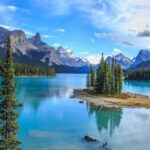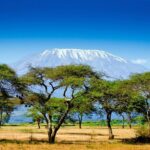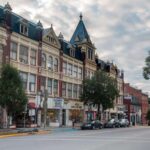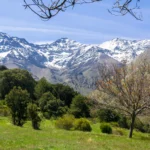Michael and Lana Law have been to Big Bend NP many times to camp and hike. One of their favourite parks in the United States is there.
Big Bend National Park is one of the most beautiful places in Texas to see nature.
Along the Rio Grande river, near the border with Mexico, this park is a great place to play outside, with a long list of things to do.
Hikers, campers, canoers, birdwatchers, and people who love nature in general will not be let down.
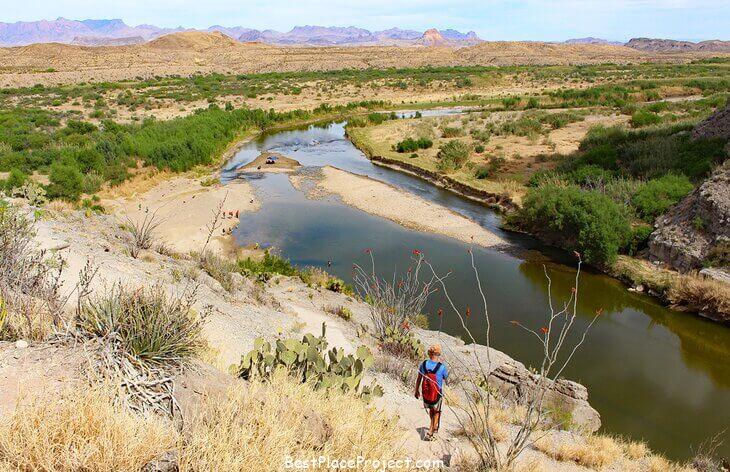
Even if you just want to drive through the park, the Ross Maxwell Scenic Drive has interesting sights and scenery. For a little more excitement, stop by the Fossil Discovery Exhibit or soak in the hot springs.
If that’s not enough, you can take a short boat ride to Mexico for lunch, find the best place to watch the sunset, or plan a stay in a luxury lodge.
Visit one of the visitor centres to get a map of the park and information about the weather, then use our list of things to do in Big Bend National Park to start exploring.
17. Hike Santa Elena Canyon

The Santa Elena Canyon Trail is one of the most beautiful hikes in Big Bend National Park. It also has the best ratio of reward to effort of any hike in the park.
This great 1.7-mile round-trip walk follows the edge of the Rio Grande River into the Santa Elena Canyon, where sheer, 1,500-foot-high walls rise up on each side of the river above you.
When the water level is low, you can wade from the end of the trail into the canyon. The trail goes up about 80 feet, and near the beginning, there are great views from above the river.
16. Soak in the Hot Springs
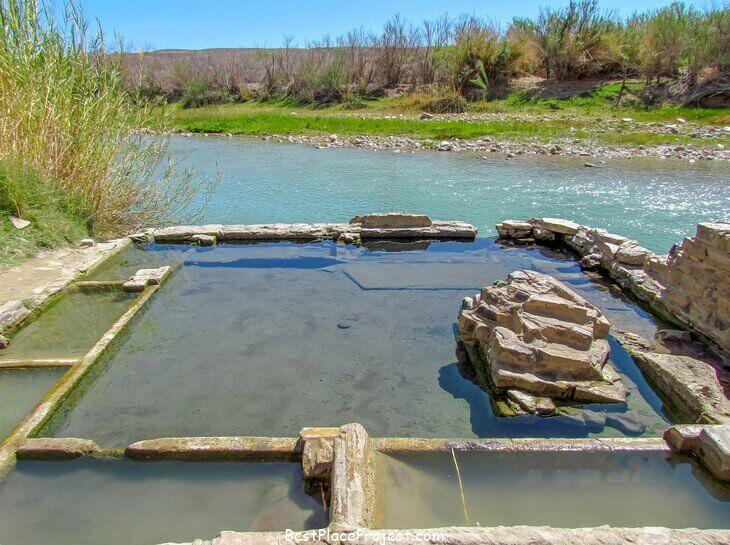
One of the most popular things to do in the Rio Grande Village area is to swim in the natural hot springs on the river’s edge, where the water is 105 degrees Fahrenheit.
If you get too hot, you can take a quick swim in the river to cool down. The primitive pool is just.25 miles from the parking area, along a trail that goes by pictographs and the remains of an old resort from the early 1900s.
If you have time and want to see amazing views of the Rio Grande and the surrounding mountains, you should definitely walk the.
75-mile hot springs loop. This beautiful trail goes up along a ridge above the hot springs and gives you views of the river both upstream and downstream.
15. Drive the Ross Maxwell Scenic Drive

Take the Ross Maxwell Scenic Drive to get to Castalon and the Santa Elena Canyon area for a beautiful drive through the park. The drive goes through some beautiful desert scenery.
In the Chihuahuan Desert, you can see mountains that go on for a long way. Stop at the Homer Wilson Ranch Overlook to look at the old homestead and enjoy the view.
From this highway, you can get to the Mule Ear Springs Trail. If you don’t want to hike, you can stop at the overlook to see these twin peaks, which are the cores of old volcanoes.
14. Learn about the Area’s Natural History at the Fossil Discovery Exhibit
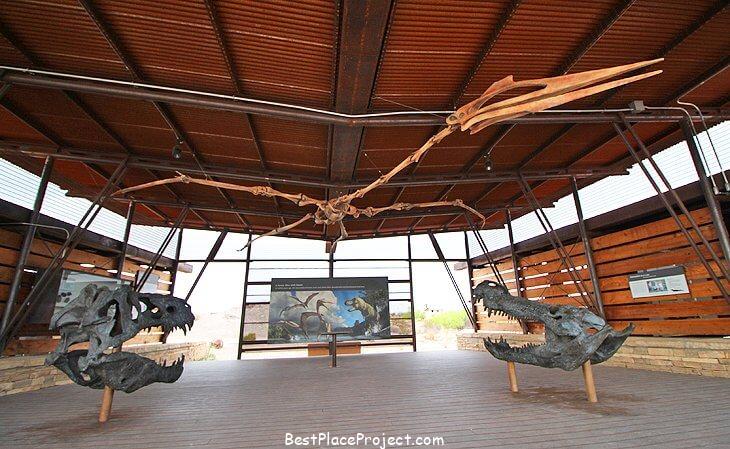
The Fossil Discovery Exhibit is a great place to stop if you have young children on the way down from Marathon. It is north of Panther Junction.
Here, everyone can find out about the park’s rocks and soil. This exhibit is one of the more recent things to be added to the park. It has outdoor rooms with plaques and displays that you can touch, feel, and climb on to learn more.
The most impressive pieces are the bronze skulls of a giant alligator and a Bravoceratops dinosaur, as well as a giant pterosaur, which is the largest flying animal ever discovered, hanging from the ceiling of one of the rooms.
13. Walk the Nature Trail at Rio Grande Village

The Nature Trail is the best choice for a short, easy, and beautiful trail near Rio Grande Village. From the campground, this trail takes you out over a pond, where you can see turtles basking in the sun and fish swimming below a low bridge that crosses the water.
This green area is very different from the desert around it and is a good place to see birds. On the other side of the pond, the trail goes through a desert and gives you views of the pond, the Rio Grande River, and faraway mountains. The trail goes in a loop and ends at an overlook.
You can just walk to the bridge, which is a short distance, or do the whole.75-mile walk.
12. Take a Trip to the Mexican Village of Boquillas
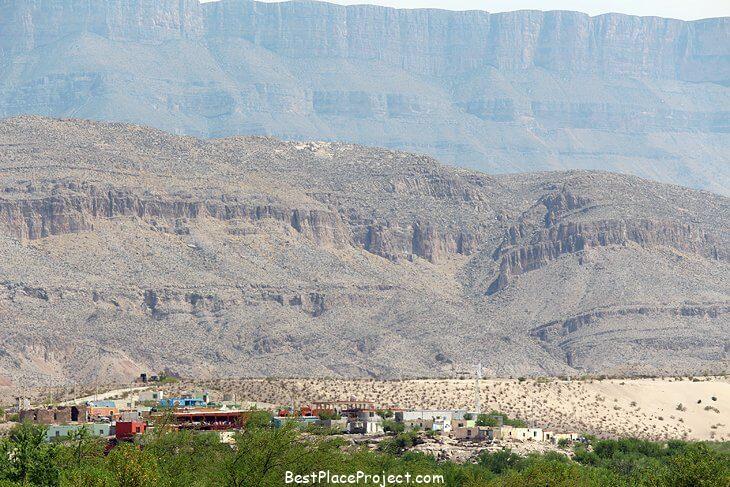
If you want to stop briefly in a Mexican village, don’t forget your passport. At Boquillas Crossing, a border guard will look at your passport before you walk down to the river and call for a rowboat from the other side.
The boat will pick you up and take you to the Mexican side of the Rio Grande River, where you can catch a ride on a horse, donkey, or vehicle. Each person must pay $5 to ride the ferry.
From the river, the village is about a mile uphill. You can walk it, but the whole way is uphill. You might want to pay for the ride into the village and then walk back down.
A pickup or a burro can also take you to town for $5. The trip costs $8.00 if you want to ride a horse.
Some restaurants serve both food and drinks. This is a nice little lunchtime trip in the afternoon.
11. See the Sunset over the Window
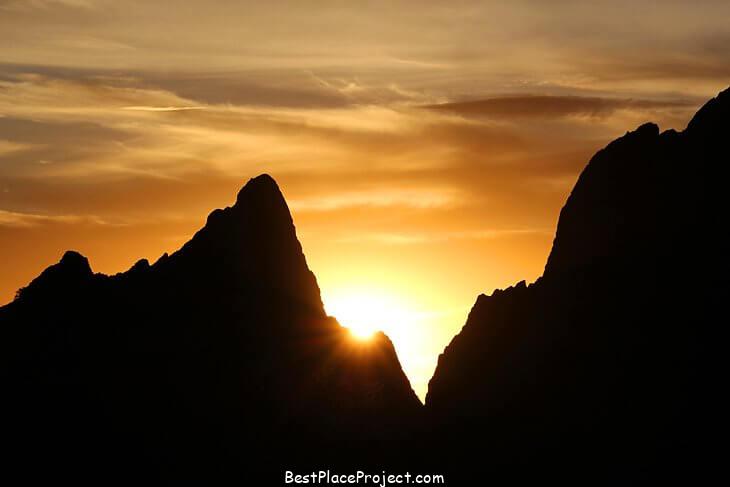
The Window is a big V-shaped cut in the side of a mountain that lets you see the sky and desert far away. From the Chisos Basin Visitors Center, you can take a 0.3-mile trail to the Window View, which is a popular place to watch the sunset.
This short, wheelchair-accessible trail gives you a view of the Chisos Basin and the Window at any time of day, but at night, the rocks form a silhouette against the colourful sky.
Those who know a little bit about photography might want to try a long exposure shot with the “V” framing the changing night sky.
10. Hit the Hiking Trails
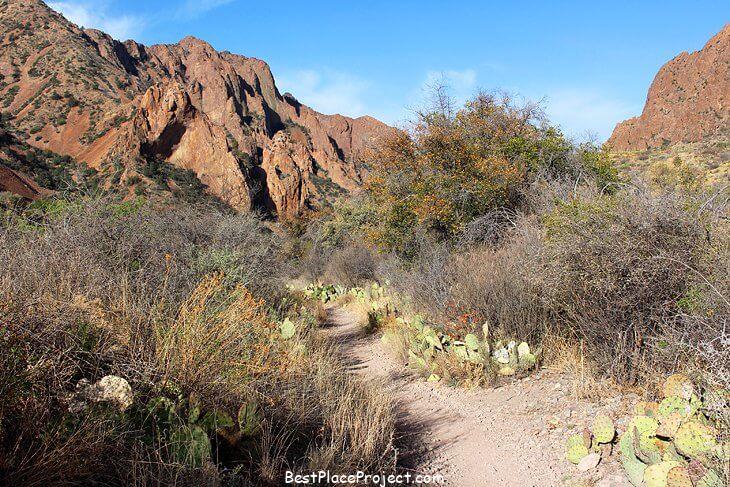
Hikers should set aside some time to go hiking. Hikers who are in good shape and want to go on big adventures can plan multi-day hikes or go on one of the epic day hikes, such as Emory Peak or the South Rim.
Hikers looking for shorter day hikes with great views should try the Santa Elena Canyon Trail, the Lost Mine Trail, Boquillas Canyon, or the Windows Trail.
Try the Hot Springs Trail if you want to learn about history and maybe swim. See our article on the best hikes in Big Bend National Park for more information and a more in-depth look at the different trails.
9. Spend a Night Camping under the Dark Skies
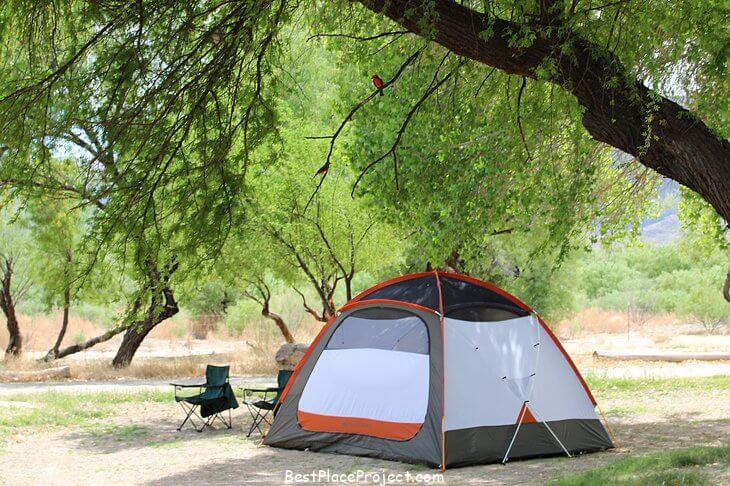
Big Bend National Park has been given the title of a National Dark Sky Park. Since there is almost no light pollution, the night sky looks like a sea of diamonds, and the stars and constellations are easy to see.
If you camp at one of the Big Bend campgrounds, especially on a night when there is no moon, you will have a great view of this nighttime show. You can also see some of the park’s wildlife if you go camping there.
Even though javelinas and roadrunners are common, you may also see some interesting birds if you camp in the Cottonwood Campground. Listen for great horned owls at night and look for vermilion flycatchers during the day.
During the busy season, which runs from January 1 to April 15, it’s best to book ahead. Sites can be reserved on a rolling basis up to six months in advance.
8. Dine, Hike, or Pick Up Souvenirs at the Chisos Basin Area

The Chisos Basin Area, which is in the mountains near Panther Junction, has everything you could want. From the Chisos Mountain Lodge Restaurant and Patio, you can look out at the Window while you eat.
At the Basin Convenience store, you can buy everything from supplies to souvenir jewellery and clothing. The Chisos Basin Trailheads are where you can start one of several hikes.
From here, you can hike Emory Peak, South Rim, Chisos Basin Loop, Window View, and Window Trail.
The Chisos Mountain Lodge is also in this area, and the Chisos Basin Campground is right below it. The start of the Lost Mine trail is close by.
7. Canoe along the Rio Grande
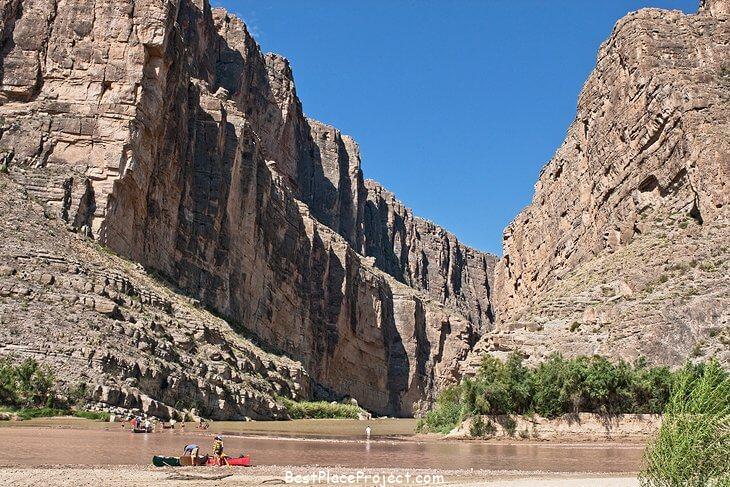
The Rio Grande flows along the border between the United States and Mexico. At Santa Elena Canyon, it has cut through the ground to make walls that are 1,500 feet high. Paddling through the canyon is a great way to learn about the area’s geology and a truly unforgettable experience.
The trips begin in the town of Lajitas and end at the canyon’s mouth. Most of the time, these tours take all day and include lunch. On the west side of the park, trips can be set up in either Lajitas or Terlingua.
If you have your own gear, you might want to go on a “boomerang” trip. To do this, you have to paddle up through the canyon and let your boat drift back down. Permission is needed and is free.
6. Explore the nearby Ghost Town of Terlingua
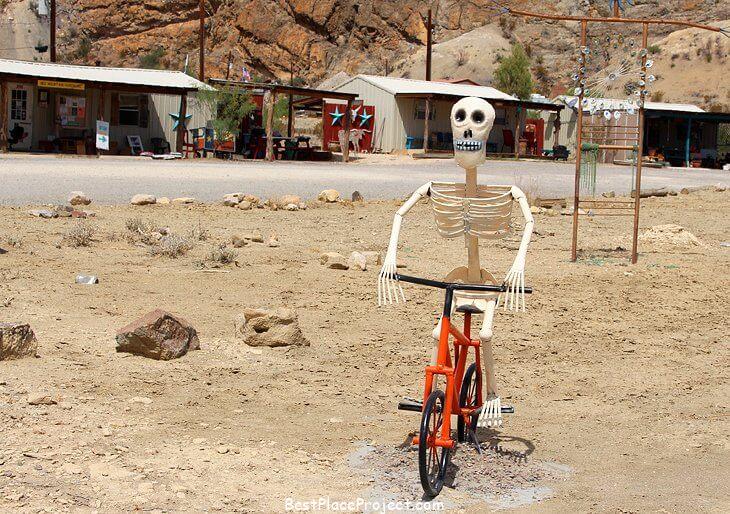
Study Butte and Terlingua are only three to four miles from the west entrance to the park, and the Terlingua Ghost Town is six to seven miles down the road.
A quick stop for lunch in the Terlingua Ghost Town is a fun thing to do if you are already on the west side of the park. This will give you a taste of what life is like in a very small town in this part of West Texas.
The Terlingua Trading Company is one of the biggest shops in town. It has a wide range of souvenirs, arts and crafts, jewellery, and other things.
The Starlight Theatre Restaurant is right next door. You can eat inside and listen to live music. The Posada Milagro is close by. It’s a great place for breakfast and early lunch, and it has a beautiful patio outside.
5. Treat Yourself to a Night at a nearby Resort

Big Bend National Park is a great place to enjoy nature, but going there can be tiring. At the end of the day, it can be nice to go back to a luxury resort or a charming old lodge.
North of the park, in the cute little town of Marathon, where there are a couple of art galleries and the great Gage Hotel, you can have an authentic experience. This historic property is an oasis and a reason to visit this part of Texas all by itself.
The Gage Hotel, which opened in 1927, is a great place to hang out with other guests around a fire pit at night, relax in front of a fireplace in one of the cosy common rooms, cool off in the pool, or get some of the best food in the area at the hotel’s 12 Gage Restaurant.
This is a great place to spend your whole trip, or even just one night at the end of a long hike or a couple of nights camping in the park.
On the other hand, the western-style Lajitas Golf Resort is on the west side of the park. Lanny Wadkins, a famous golfer, designed the 18-hole golf course there. This big resort has a lot to do, from canoe trips to horseback riding. It’s also a nice place to relax around the pool or eat a good meal.
4. Bird-Watching
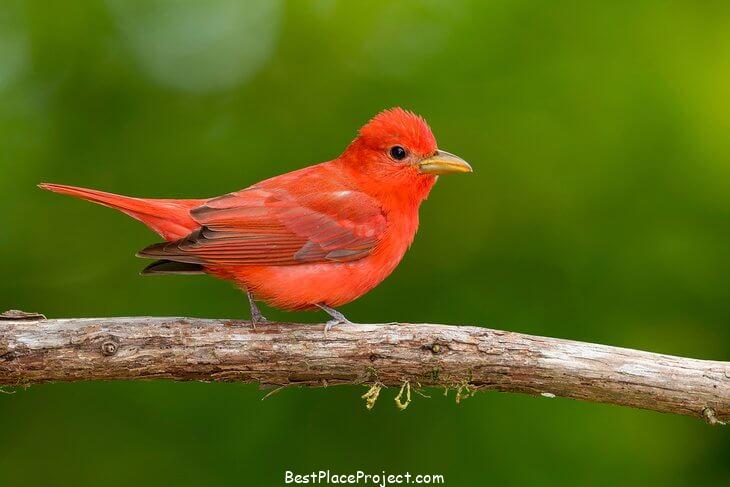
Big Bend National Park is a great place to see migratory birds as they move north or south. The park is right in the middle of one of North America’s main flyways, and the Rio Grande provides water year-round, making it a great place to stop.
The park has many different kinds of birds all year long, but the most variety is in the spring. The Colima warbler, the rufous-crowned sparrow, the summer tanager, and the western screech owl are some of the most important species to look out for.
The Nature Trail at Rio Grande Village, Boot Canyon, Santa Elena Canyon, the Cottonwood Campground, and the Chisos Mountains are all good places to see birds in the park. When you go camping, roadrunners are often around, especially if there is food nearby.
3. Explore nearby Big Bend Ranch State Park
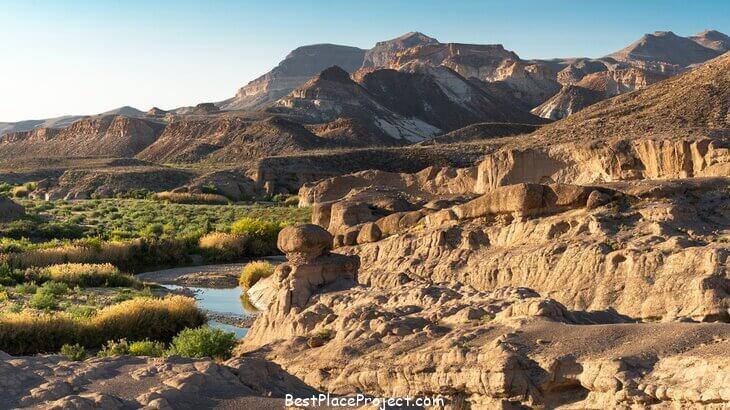
If you love the desert scenery of Big Bend National Park but want more space to yourself, Big Bend Ranch State Park is just down the road to the west. This huge wilderness area has as much solitude as you can handle in the high desert.
This former working ranch is now the biggest state park in Texas. It covers 450 square miles. In the summer, it can get as hot as 120 degrees Fahrenheit, but in the shoulder seasons, the days are warm and the nights are cool.
Activities available here are extensive. You and your toys will find nearly 240 miles of trails for horseback riding, mountain biking, and hiking. If you’d rather move with a car, there are 70 miles of unmaintained dirt roads that are best for high-clearance 4x4s.
Camping is available both in the front country and in the back country, and the Sauceda Bunkhouse has places to stay with roofs.
2. Take a Scenic Drive on Texas Highway FM170
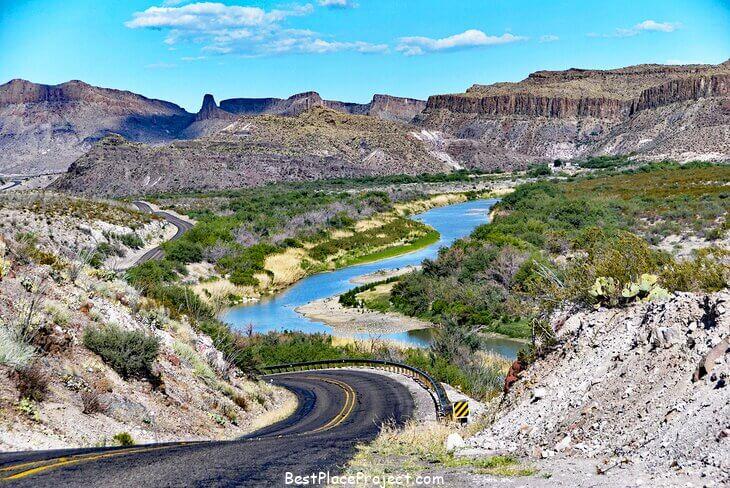
This part of the highway, which follows the curves of the Rio Grande, has some of the most beautiful views in all of Texas. Rolling hills, some of which are steeper than 15%, twists, turns, ruins, and seeing animals all keep drivers and passengers entertained.
A few miles from Lajitas, near the beginning of the highway, is the old set from the 1985 Roy Clark movie Uphill all the Way. This is a strange thing to see. There are only a few outbuildings and a chapel left.
Along the way, you could also stop at Big Bend Ranch State Park and Fort Leaton State Historic Site for a hike or two.
From Lajitas to Presido, the highway is 50 miles long. It goes through mostly uninhabited land until you get close to Presido, where farms line the floodplain. Eat here and then go back the way you came.
1. South Rim Loop

Beginning in the Chisos Basin, the South Rim Loop is a strenuous 12.6 mile trek that encompasses some of the best sights in Big Bend.
From the basin, you’ll embark on a steady climb up to the rim from which you’ll experience jaw-dropping views of the Chihuahan Desert.
From bottom to top, hikers will gain just shy of 3,000 feet of elevation, with options to venture further along to Emory Peak.
A popular walking direction is counterclockwise, which offers a more gradual climb. But, for a shorter yet steeper climb to the ridgeline, go clockwise.
As a loop, the trail begins and ends at the same spot and can be completed as a day hike. However, for an unforgettable desert experience, why not camp out along the way?
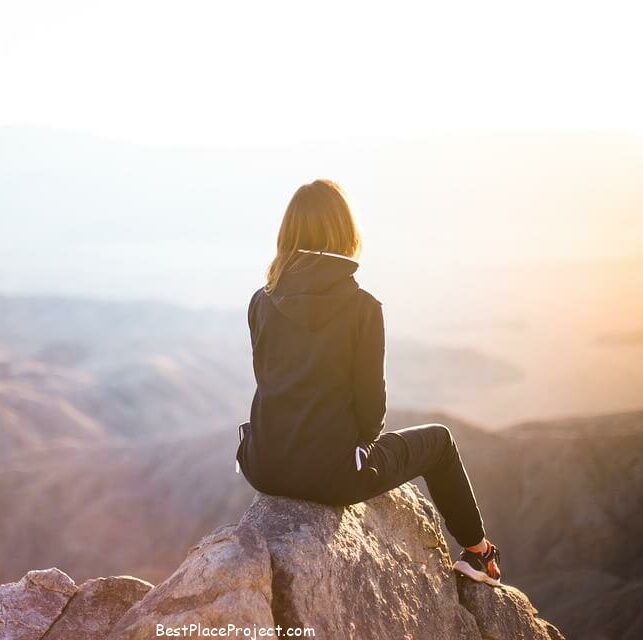
I love traveling and exploring new places and this website is all about listing all best places in the world that you can go and explore.



